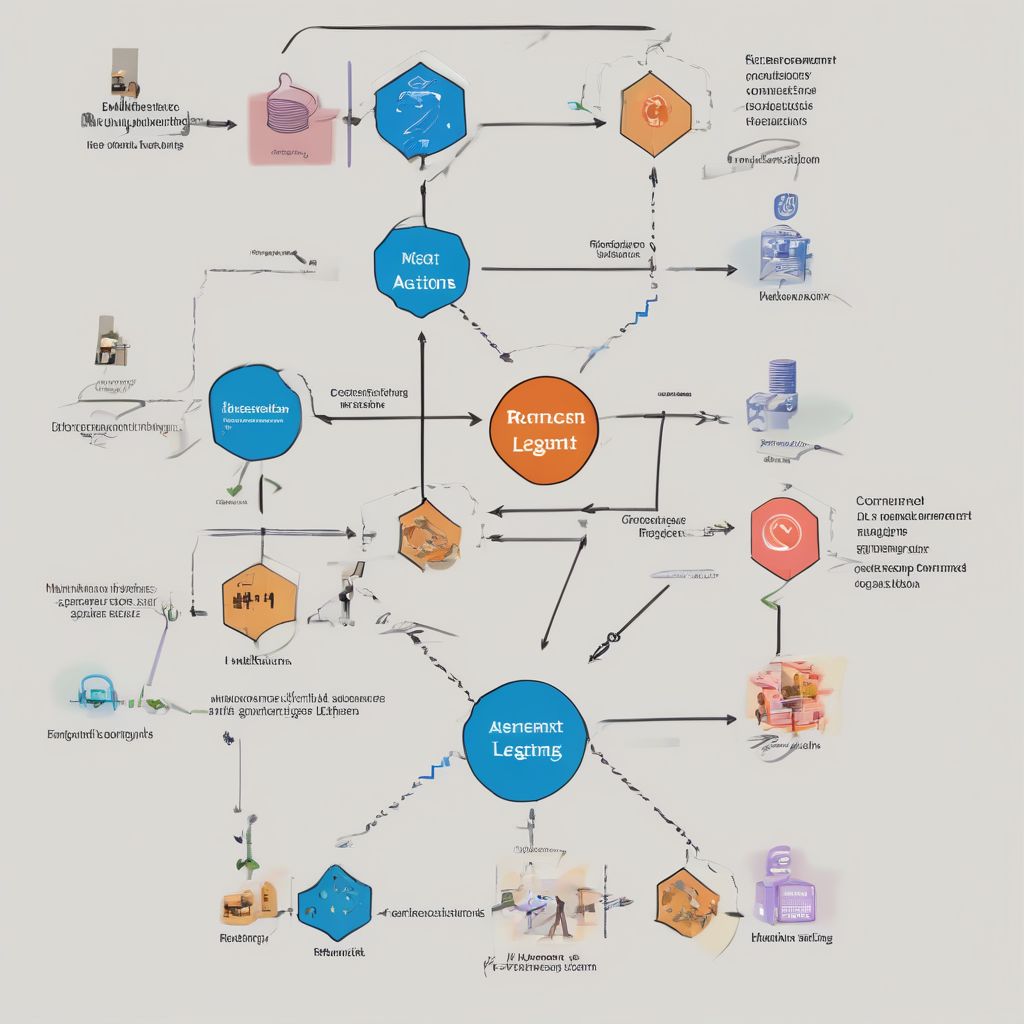Imagine a child learning to ride a bike. They wobble, they fall, they get back on. Each attempt provides feedback – a scraped knee, a successful turn, a burst of speed – that helps them understand what works and what doesn’t. This, in essence, is the heart of reinforcement learning (RL) in AI.
What is Reinforcement Learning?
Reinforcement learning is a type of machine learning where an AI agent learns to achieve a goal in an uncertain, potentially complex environment. Unlike other learning paradigms, RL doesn’t rely on explicit instructions or pre-labeled data. Instead, it’s all about learning through trial and error, much like our bike-riding child.
Key Components of Reinforcement Learning:
- Agent: The learner and decision-maker, analogous to the child learning to ride the bike.
- Environment: The world in which the agent operates, such as the road, the bike itself, and even the weather.
- Action: Steps the agent takes within the environment, like pedaling, steering, or braking.
- State: The current situation of the agent, encompassing its position, speed, and the surrounding environment.
- Reward: Feedback from the environment after each action, reflecting how well the agent is performing (e.g., reaching a destination quickly or avoiding obstacles).
The Learning Process:
- Exploration: The agent initially explores the environment, taking random actions to see what happens.
- Exploitation: As the agent learns which actions lead to positive rewards, it starts exploiting this knowledge to maximize its cumulative reward over time.
- Policy: The agent develops a strategy, or “policy,” that guides its actions in different states to achieve its goal.
Applications of Reinforcement Learning:
RL is transforming various fields, from robotics and gaming to healthcare and finance. Some compelling examples include:
- Game AI: RL powers some of the most advanced AI systems in games like Go, chess, and Dota 2, showcasing superhuman capabilities.
- Robotics: RL enables robots to learn complex tasks like grasping objects, navigating environments, and even performing surgery, all without explicit programming.
- Personalized Recommendations: RL helps build recommendation systems that adapt to individual user preferences, delivering highly relevant content and products.
- Healthcare: RL shows promise in areas like personalized treatment plans, drug discovery, and optimizing resource allocation in hospitals.
Challenges in Reinforcement Learning:
Despite its potential, RL faces several hurdles:
- Sample Efficiency: RL algorithms often require vast amounts of data and training time, making them computationally expensive and time-consuming.
- Safety and Ethics: Ensuring the safety and ethical behavior of RL agents, especially in real-world applications, remains a critical challenge.
- Generalization: RL agents can struggle to generalize their learning to new, unseen situations, limiting their adaptability.
The Future of Reinforcement Learning:
The field of RL is rapidly evolving, with ongoing research focusing on addressing its limitations and unlocking its full potential. Some exciting avenues include:
- Deep Reinforcement Learning: Combining RL with deep learning, enabling agents to handle more complex environments and tasks.
- Transfer Learning in RL: Allowing agents to transfer knowledge gained from one task to accelerate learning in similar but distinct tasks.
- Explainable RL: Developing methods to understand and interpret the decision-making processes of RL agents, fostering trust and transparency.
 Reinforcement Learning Diagram
Reinforcement Learning Diagram
[amazon bestseller=”Reinforcement Learning: An Introduction”]
Conclusion:
Reinforcement learning stands as a powerful paradigm in AI, enabling machines to learn and adapt through trial and error, much like humans do. While challenges remain, the ongoing research and development in RL hold immense promise for transforming various industries and shaping the future of intelligent systems. As we continue to unravel the intricacies of RL, we can expect to witness even more impressive feats of machine intelligence, pushing the boundaries of what’s possible in the realm of AI.
What are your thoughts on the potential of reinforcement learning? Share your insights and questions in the comments below!
